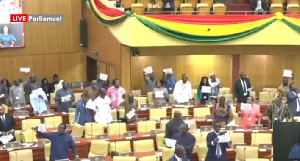The Ghanaian economy is on a rebound with a sustained momentum in pick-up in economic activity, Governor of the Bank of Ghana (BoG) Dr Ernest Addison, has said.
He explained that the Bank’s updated Composite Index of Economic Activity (CIEA) recorded an annual growth of 13.9 percent in January 2021, the highest since December 2019, compared to 3.4 percent in the corresponding period of 2020.
The key drivers of economic activity during the period were construction, imports, industrial consumption of electricity, domestic Value Added Tax (VAT), passenger arrivals at the airport, and port activity.
“Results from the Bank’s latest confidence surveys conducted in February 2021 showed some softening of both consumer and business sentiments. The softening of consumer confidence reflected heightened concerns about the potential re-imposition of restrictions following the upsurge in COVID-19 cases in the first two months of the year,” he said while announcing that the central bank has maintained the policy rate at 14.5 per cent.
He added “Similarly, business sentiments about the general economic situation also deteriorated on concerns that re-imposition of restrictions would further have detrimental consequences on the attainment of their short-term goals.
“However, with the commencement of the vaccine roll out and gradual lifting of remaining restrictions, the expectation is for both business and consumer confidence to rebound.”
Inflation remained above pre-pandemic levels with price developments in the first two months of 2021 broadly mixed.
The two readings in the first two months showed that headline inflation eased from 10.4 percent in December 2020 to 9.9 percent in January 2021, and subsequently went up to 10.3 percent in February, marginally outside the medium-term target band of 8±2 percent.
The uptick in inflation in February was mainly driven by non-food inflation, which rose to 8.8 percent from 7.7 percent in January. Food inflation, on the other hand, eased to 12.3 percent from 12.8 percent over the same comparative period.
Underlying inflation pressures also went up marginally over the period, consistent with headline inflation trends.
The Bank’s core inflation measure, which excludes energy and utility, moved up marginally. Inflation expectations of businesses inched up in February, while both consumer and financial sector inflation expectations declined.
Business News of Tuesday, 23 March 2021
Source: 3news.com

















